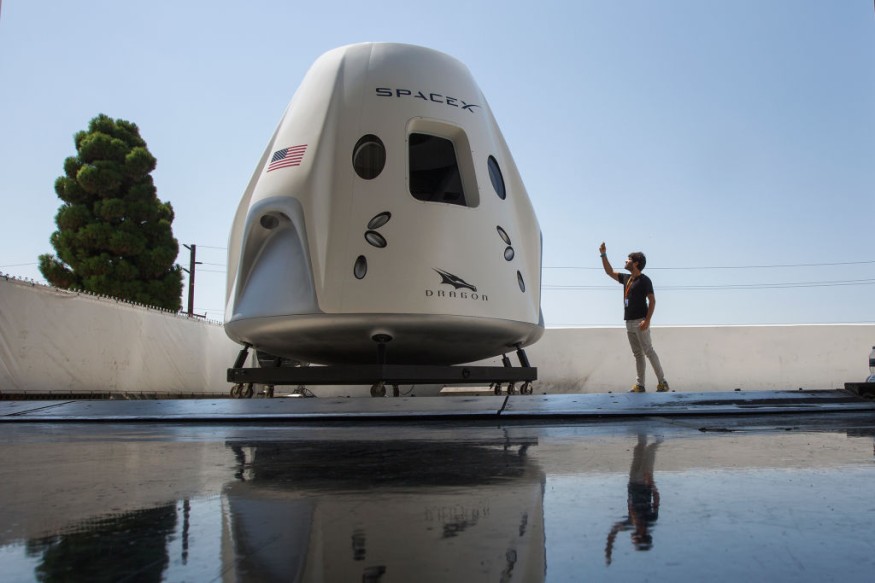Scientists, experts, and even astronomers worldwide have pulled off incredible feats in 2020.
Although the pandemic barely slowed down NASA and its spaceflight partners, Elon Musk had a successful 2020. SpaceX surpassed a range of benchmarks and achieved the goals it set for itself this year.
As the new year approaches, here is a peek back at some of SpaceX's boggling milestones in 2020.

January to April 2020
Mission CRS-19 dragon cargo capsule entered the waters just west of Baja California on January 7th. The capsule, as well as 3,800 pounds of scientific gear and instruments, were rescued by teams. In March, the subsequent and appropriately called CRS-20 mission represented the 20th total period that the ISS was resupplied by SpaceX vehicles and returned safely to Earth.
The final delivery of the CRS to the ISS in April marked the conclusion of the initial NASA SpaceX contract and the final flight of the first-generation Dragon cargo capsule version, which has since been replaced by the more versatile and revised Dragon 2.
Elon Musk has already seen valuable progress for Starlink. Starting with a good launch back in early January of some 60 of the microsatellites (which is the most than a Dragon capsule will carry), SpaceX has managed to launch 14 more sets of them.
In mid-January, SpaceX triumphantly exhibited the Dragon crew capsule flight escape system. Starting at Kennedy Space Center from launch complex 39A, the uncrewed Falcon 9 rocket traveled for just 90 seconds until the abort signal was triggered, forcing the crew capsule to detach violently from the rest of the rocket. Before removing its parachutes and crashing securely in the Atlantic for rescue, the capsule exploded at 400 mph (roughly 643 km/h).
May to August 2020
The year did not start all that well for the Starship production, which exploded on the launchpad in May with yet another concept, the SN4. This is a sequence of blow-ups, collapses, and other related glitches, but it's rocket science, so it's meant to be tough. On its test flight in August, the replacement of the ill-fated SN4, the SN5, managed to prevent bursting and even successfully elevated 150 meters off its launch pad before crossing over to hit a new pad a short distance away.
The next obstacle for SpaceX arrived in June with the dangerous flight of the DEMO-2 mission; the crew capsule transported the first time real people. Astronauts Robert Behnken and Douglas Hurley safely lifted off from Launch Complex 39A after one scrubbed launch attempt, representing the first US astronauts launching from US soil since the Shuttle period in 2011.
Over the year, the organization has strengthened the launch vehicle recovery strategies. SpaceX crews could snatch the nose cones falling out of mid-air in July using a large net placed on top of a rescue ship. Those nose cone fairings are worth $6 million combined, so it is paramount to recover them unharmed until they reach the surface of the ocean at some appreciable speed.
The search for military contracts by SpaceX is not restricted to the US. The Army/Navy/Air Force Satellite Information System 2 (ANASIS-II), a stable communications satellite for the South Korean Defense Construction Agency, was launched into geosynchronous orbit in July by the same Falcon 9 that took Bob Behnken and Doug Hurley to the ISS.
The Space Force Space and Missile Command (SMC) declared in August that it had chosen SpaceX and competitor ULA to begin its National Security Space systems for five years, effectively bringing surveillance satellites into orbit. The deal extends until 2024 for the first sale, which will take place in 2022, with a massive $316 million price tag.
A separate Falcon 9 carrying SAOCOM 1B, an Argentine Earth Observation satellite used to provide emergency responders with radar data, was launched from Cape Canaveral on 30 August. Interestingly, like nearly any other launch from that site has headed since 1969, the rocket followed a southern path that would take it towards Cuba, rather than east.
September to December 2020
The diligent work of SpaceX paid off when NASA finally approved the Crew Dragon in November, which is the Falcon 9 and the capsule itself. According to a statement, part of the agency's Commercial Crew Network is the first commercial spacecraft vehicle in history capable of carrying astronauts to and from the International Space Station.
The CREW-1 flight was successfully deployed with not two but a complete complement of four astronauts onboard from the Kennedy Space Center in Florida. On November 16th, NASA astronauts Victor Glover, Mike Hopkins, Shannon Walker, and JAXA astronaut Soichi Noguchi entered the ISS ahead of a six-month station stint. By chance, Victor Glover is the first black astronaut to remain onboard the ISS for six months.
The Space Force Space and Missile Command (SMC) also chosen SpaceX to launch its National Security Space systems and bring surveillance satellites into orbit for five-year contracts. According to the award statement, the Space Force handed SpaceX an additional $29.5 million for a one-year deal that provides early integration studies and fleet monitoring for non-national security space missions.
The organization has successfully deployed more than 950 of the thousand Starlinks. SpaceX already plans to send into the sky by the end of the year as of late November, but SpaceX finally needs more than 42,000 Starlinks covering the globe.
As early as this week, the Starship's toughest obstacle to date, the first high-altitude test trip, could happen. In September, the company's newest prototype, the SN8, was completed and was initially expected to fly to a height of around 60,000 feet before safely descending to Earth. For unknown purposes, the limit was lowered to 50,000 feet in late September, and the test itself has since been repeatedly postponed. In late November, however, Musk tweeted that a proper flight test was imminent following its engines' successful static firing.
Check out more news and information on SpaceX on Science Times.










